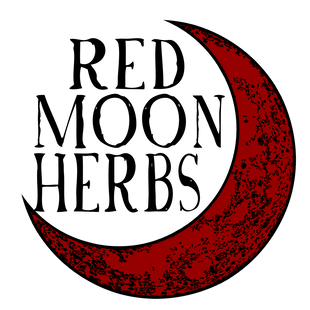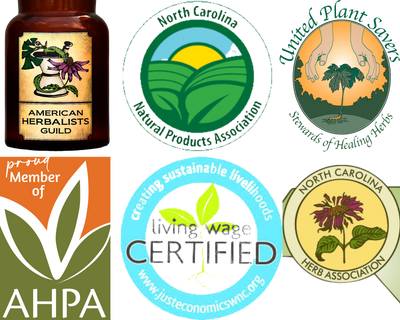Clogged Milk Ducts and Breast Health: Poke Root to the Rescue
Herbs for Breastfeeding Mamas
Boobies and babies go together like peas and pods, sure, but that doesn’t mean there won’t be any pain involved. For many of us breastfeeding mamas, there may be LOTS of discomfort involved at times. It helps to have an herbal arsenal by your side for those times when all the other home solutions you’ve read up on just aren’t cutting it, it’s 4 AM and the internet full of ideas isn’t working.
Poke root oil or poke root salve is a wonderful herbal ally for nursing mamas who are looking for a traditional health-affirming strategy that really kicks it up a notch.
Issues like tenderness and discomfort in the breasts and clogged or plugged milk ducts can pop up when least expected - and least wanted - especially during times of stress and depressed immunity. And what’s not stressful and draining about sleeping with a tiny creature who may be waking up every hour on the hour to suck on you? There are too many causes of plugged milk ducts to go into here - from restrictive bras to latch issues - but it’s worth checking into the root causes to help you identify the underlying issue behind the issue.
My little is almost 2 1/2 and we are still going strong with the ‘Bobs’: Bob One (on the left) and Bob Two (on the right). He lets me know which number Bob he wants and sometimes it's pretty smooth sailing. Whenever I have dealt with a clogged milk duct since beginning my nursing career, it always lets me know it’s coming (so considerate!) a few hours in advance with just a little hint of a tingle in the breast tissue. In that moment, I run for the (massive bottle of) echinacea extract and the (tiny bottles of) poke root extract and salve in my herb cabinet. As long as I know I have these two herbs on hand, at least I know that I have friends on my side no matter what’s to come.
Herbs for a Clogged Milk Duct
You may have already checked off all the boxes of things you’re supposed to do if you have a clogged milk duct: hydrate yourself, massage the inflamed area gently in circles towards the nipple to get the breast tissue more malleable and improve the circulation. Take a hot shower and use the magic combination of steamy water plus the gentle pressure of your hands to encourage the traffic jam in your milk duct to clear out. Remember that so much of your breast is adipose or fatty tissue, which can almost be melted or molded with heat. Alternatively, the alternating of heating and cooling elements - think a hot water bottle and an ice pack - can be super useful in abating the misery and swelling that comes along with a clogged milk duct.
And when in doubt: nurse, nurse, nurse. It may be so awful that you find yourself whispering all sorts of words you don’t particularly want your innocent babe to hear, but as counterintuitive as it may seem, encouraging the flow of milk through the ducts and out through the nipple is possibly the best thing that you can do to encourage the clogged milk duct to dissipate. You can employ the healing power of gravity via the dangle nursing method, in which you aim to oh-so-delicately (or not so delicately, depending on how much discomfort you’re in at the time!) dangle your breast over your eager baby who’s propped on the couch or bed.

If I have poke root salve or oil (see the difference between a salve and an oil) on hand, I head myself to bed, since rest is another key component of restoration, and start doing hourly massages with poke root salve or poke root oil, making sure that I carefully wipe off any excess that might be around the nipple area before baby’s next feeding. If you don’t have access to poke root salve or oil, you can use a general Breast Massage Oil, Comfrey Oil or Salve, or Calendula Oil to help gently stimulate the lymphatic flow, but it won’t have the powerful anti-infective properties of the poke. Don’t have either of those on hand? Try a few drops of poke root extract or calendula extract in a cupful of hot water and use a cloth to create a comforting compress to apply to your breast for a few minutes at a time. Sore breasts that hold residual discomfort in them even after the clogged milk duct is history can really benefit from a gentle massage with one of these oils every few hours. Got nothing in the house but a cabbage and a potato? Get grating … you’re in luck! Grated, raw potato and raw cabbage leaves make a terrific, absorbent poultice in a pinch. Bonus: you will look and smell just as healthy as you’ll feel afterwards. 🙂

A clogged milk duct often rears its little head as a way of saying - to the busy, tired mama who definitely doesn’t want to hear it - ‘Self-care, self-care, self-care! Please, more, self-care!’ This plaintive cry gets louder and louder until it, if ignored, turns into any number of red-alert responses in the breasts, which can be uncomfortable and downright debilitating, at worst.
Herbal Preparations for Healthy Breast Tissue
When full-blown aggravations of the tender breast tissues are in the house, they can be monstrous. Resulting irritations that begin with clogged milk ducts must have invented the saying, “If Mama ain’t happy, ain’t nobody happy.” States like these might be accompanied by a spike in temperature, feelings of soreness and achiness and generally being unwell, and all the other signs of acute and severe "ick", which thankfully are what poke root does battle with best. Faced with scenarios like thesee, I pull out all my herbal allies: put your echinacea and poke root extract bottles by your bed next to your Breast Massage Oil and prepare to hunker down until the herbs have done their thing.
Acute breast discomfort is a force to be reckoned with. While poke and echinacea are my absolute no-brainer breast buddies in situations like these, I also stock my nightstand with Immune Blend (usnea, elderberry, and echinacea) to help fight off the infection, Yarrow to speed the return to wellness and for the fever, and perhaps some Skullcap, California Poppy, Sleepy Blend, or Passionflower to help ease discomfort and promote rest.
Treat Poke Root with Respect, and She Will Ally with Your Health

Poke root is your power plant. There is no messing around with this potent herb that seems like it was just made to be a strong warrior for nursing mamas. It’s even in the name - Phytolacca americana - catch the milk reference in there? -Lacca, as in lactation, as in plant milk. Poke is the herbal ally for breastmilk. Poke is a drop-dose herb only, never to be taken in doses larger than a couple of drops at a time because if used in abundance it can lead to nausea, vomiting, and other unwanted side effects. It demands respect. Poke root has a direct and virtually immediate affect on the lymphatic system, which is interwoven into so much of breast tissue. Its amazing abilities to act as a lymphatic stimulant and adversary against acute issues help the ‘waters’ or milky channels of the body to flow smoothly once again. According to its traditional uses, many people find poke root a highly effective ally for healthy sinuses, promoting lymphatic flow, general skin health, and so much more.

Poke, like a mama, knows what’s best. And if it's used appropriately it will lead to remarkable allyship for your clogged milk ducts and stressed breasts.
Blessings to you and your boobies on this breastfeeding journey!
NOT FOR USE DURING PREGNANCY
- The Nursing Mother’s Herbal by Sheila Humphrey
- Botanical Medicine for Women's Health and Natural Health After Birth by Aviva Romm








Comments
Patrice Drolte said:
How else can poke root salve be used, for issues not strictly dealing with breast feeding/nursing? But rather the lymphatic system. Is it applied to other locations? I have purchased a jar. Post menopausal.
Patrice Drolte said:
How else can poke root salve be used, for issues not strictly dealing with breast feeding/nursing? But rather the lymphatic system. Is it applied to other locations? I have purchased a jar. Post menopausal.
Rachael Stanze said:
Brilliant! Thank you for your wealth of knowledge. I am student midwife and happened upon your page while doing some research, but man I wish I would have found it during one of my many bouts with mastitis!
Kim said:
Just learned about Poke Root for breast health. I’m interested in using it for very fibrocystic breasts.
I’ve made an oil blend:
2oz of poke root oil from mountian rose herbs
32 drops of frankincense,
12 lavender
12 cedar wood
12 cypress
18-20 fennel
20 lemon, orange, or lime.
4 oz of organic oil.
I’m massaging 2x per day. How long does it take to have a significant effect?
55 and post menopause .
Tara Moore said:
I lent becaus of COVID, battling mastitis blocked duct now for 3 weeks, on 2Nd course antibiotics. Large lump ? Galactoclele
Tara Moore said:
I have a Baldwin’s pike root tincture 1:3 45% alcohol. It’s generic instructions are 5-15 drops daily but because of Xbox I can’t get advise On a treatment dose, what is the concentration of your poke wood extract and would you like not to a tincture. How many drops per ml in your extracts. Mine is 15-20 drops per ml therefore each drop is
Aprox 0.05 ml